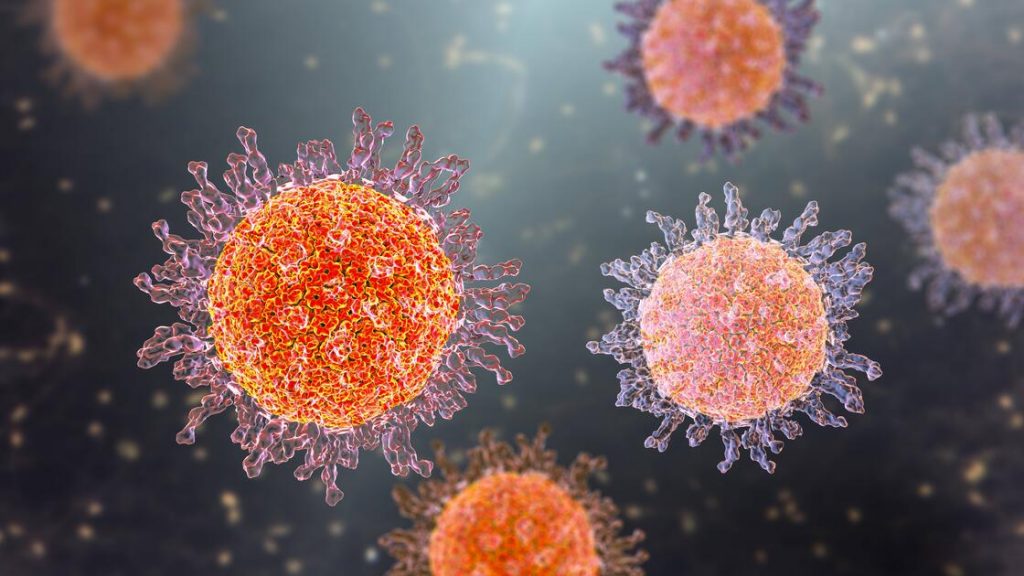The presence of viruses and bacteria has been a constant threat to human health, causing numerous diseases and pandemics throughout history. However, the key to fighting these deadly microorganisms lies in understanding their differences and similarities. Although virus vs bacteria share some similarities, such as their small size and ability to cause infections, they are fundamentally different in their structure, replication, and mode of action.
In this blog post, we will dive into the world of viruses and bacteria, exploring their unique characteristics and how they impact our health. We will examine the differences in structure, replication, and host interaction between viruses and bacteria. Understanding the similarities and differences between viruses and bacteria is crucial in the fight against infectious diseases, as it can help us develop targeted strategies for preventing and controlling their spread.
Cell Structure
All cells, including those of bacteria and viruses, have a cell membrane that separates the internal environment from the external world. Bacterial cells, however, have a more complex structure than viruses. They are prokaryotic cells that have a nucleoid region where their genetic material is located, ribosomes for protein synthesis, a cytoplasmic membrane, and a thick peptidoglycan cell wall that provides structure and protection.
In contrast, viruses are acellular entities that lack the necessary cellular machinery for replication and metabolism. Instead, they carry their genetic material in the form of either DNA or RNA, surrounded by a protein coat called a capsid. Some viruses also have an envelope derived from the host cell membrane, which can aid in the viral entry and exit from host cells.
Reproduction
Bacteria reproduce asexually through a process known as binary fission, where one cell divides into two identical daughter cells. This division allows bacteria to multiply rapidly and can result in significant population growth in a short period.
Viruses, however, cannot reproduce independently and require a host cell to replicate. Once a virus infects a host cell, it releases its genetic material, which then hijacks the host cell’s machinery to produce new viral particles. These viral particles may eventually burst out of the host cell, destroying it in the process, and continuing to infect other cells.
While both bacteria and viruses can cause illness, the different mechanisms of reproduction play a significant role in how they spread and infect their hosts.
Infectious Agent
While both viruses and bacteria can cause infections in humans, they differ in their structure and behavior. Viruses are obligate intracellular parasites, meaning they cannot replicate without a host cell. They consist of genetic material (RNA or DNA) surrounded by a protein coat or envelope.
In contrast, bacteria are independent single-celled organisms that can replicate on their own. They have a cell wall, cytoplasm, and genetic material but lack a nucleus. Both viruses and bacteria can cause various diseases, but understanding the nature of the infectious agent is key to developing effective prevention and treatment strategies.
Survivability Outside a Host
While both types of microorganisms can exist outside of a host, viruses are much less resilient for prolonged periods. Bacteria can multiply and survive in inanimate objects like food, soil, and water, whereas viruses require a host cell to replicate and survive. In some cases, viruses can remain infectious on surfaces and in the air for a short period, but they typically do not have the same survivability as bacteria.
It is worth noting that both viruses and bacteria can live on surfaces and inanimate objects, but their level of survivability depends on several factors such as the environmental conditions, the type of surface, and the level of exposure.
Benefits of Bacteria and Viruses
While both viruses and bacteria can cause disease, there are also advantages of having these microscopic organisms around. Bacteria play an important role in many processes such as nutrient cycling, decomposition, and food production. They are also essential for human health. For example, certain types of bacteria live in our gut and help us to digest food and produce vitamins.
Viruses, on the other hand, can have beneficial effects on humans and other organisms. For instance, some viruses can be used to fight cancer or to deliver therapeutic genes into cells to treat genetic disorders. It is important to keep in mind that while microorganisms such as bacteria and viruses have both beneficial and harmful effects, understanding the differences between them is essential for preventing and treating diseases.
Treatment
When it comes to bacterial infections, antibiotics are often prescribed by healthcare professionals to target the specific type of bacteria causing the infection. It is important to note that antibiotics only work against bacteria and are not effective against viruses. Therefore, it is essential to differentiate between viral and bacterial infections to determine the appropriate course of treatment.
In the case of viral infections, treatment usually involves managing symptoms with over-the-counter medications, rest, and proper hydration. In some cases, antiviral medications may be prescribed, but they are typically reserved for more severe cases or those at high risk for complications. As such, proper diagnosis and treatment are crucial to effectively combat viruses and bacteria and prevent the development of antibiotic-resistant strains.
Prevention
While they may differ in how they infect and attack the body, taking proactive steps to avoid exposure is important for both. Good hygiene practices, such as frequent hand washing and sanitizing, can go a long way in preventing the spread of both viruses and bacteria. Additionally, getting vaccinated can help protect against specific viral infections, such as the flu or COVID-19.
Similarly, taking antibiotics as prescribed and only when necessary can help prevent the development of antibiotic-resistant bacterial strains. It is important to note that while prevention strategies may not guarantee complete protection, they are effective in reducing the risk of infection and promoting overall health.
Conclusion
Viruses and bacteria are both microorganisms that can cause diseases. While they share some similarities such as the ability to mutate and adapt to their environment, their biology and structure are fundamentally different.
Understanding these differences can help us prevent and control the spread of infectious diseases. It’s important to note that both viruses and bacteria have the potential to cause serious health problems, but with the right knowledge and preventative measures, we can protect ourselves and those around us.













